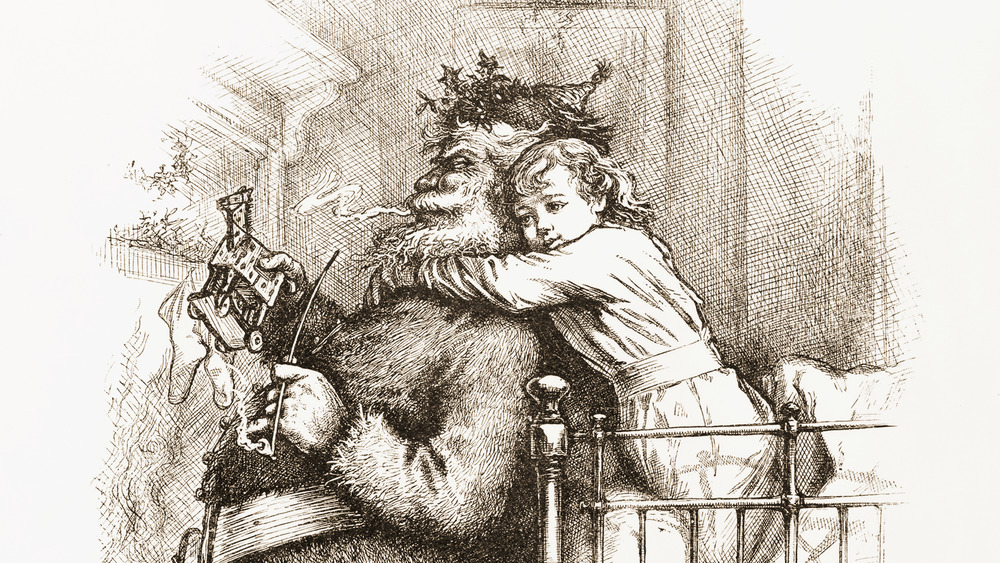Why Does Santa Live At The North Pole?
Out of all the places in the world he could possibly live, why does Santa Claus live and work at the inhospitable and remote North Pole? In 2015, Ari Shapiro of NPR's All Things Considered interviewed historian Fiona Halloran regarding the origin of the North Pole story. According to Halloran, Thomas Nast, "America's most famous political cartoonist," is responsible.
In 1863, Nast drew a popular advertisement for Harper's Weekly magazine that depicted Santa Claus delivering gifts (and copies of Harper's) to Union Army soldiers. Nast went on to produce annual Christmas drawings, one of which indicated that Santa could be reached via mail addressed to the North Pole. Per the Metro U.K., the drawing was captioned "Santa Claussville, N.P." and included a note that claimed Santa's home was "near the North Pole, in the ice and snow."
Halloran further elaborated that in the 1840s and 1850s there had been several explorations set for the North Pole, and the general public would have followed those expeditions and been interested in them in a way similar to a more current interest in expeditions to Mars. Halloran points out that Santa was always associated with cold places, and "the ultimate cold place that is remote is the North Pole." The remoteness is also an important aspect of the North Pole legend; if Santa lives in a place inaccessible to most people, it keeps the mystery of Santa alive "because you're not going to run into him at the North Pole grocery store."
Santa Claus as kindly grandfather figure
Nast's popular illustrations also changed Santa's appearance in people's imaginations. According to All Things Considered, in the early 19th century Santa was depicted as a "much more forbidding character," with a tall and slim figure and a countenance that suggested a bishop "whose job it was to judge you" — "No-no-no!" instead of "Ho-ho-ho!" — perhaps based on images of St. Nicholas and Sinterklaas, from the Netherlands.
By the middle part of the century, people in the United States were embracing sentimentality and a cozier, homier version of domesticity. Nast helped to transition Santa into that sort of figure, making him plumper and giving him a beard and pipe, with the idea apparently being to give him a more "twinkly, grandfatherly quality." This is evident in the 1892 Nast illustration seen above, in which a kindly, chubby Santa Claus, complete with beard and pipe, is embraced from behind by a loving child as he drops off Christmas presents.

